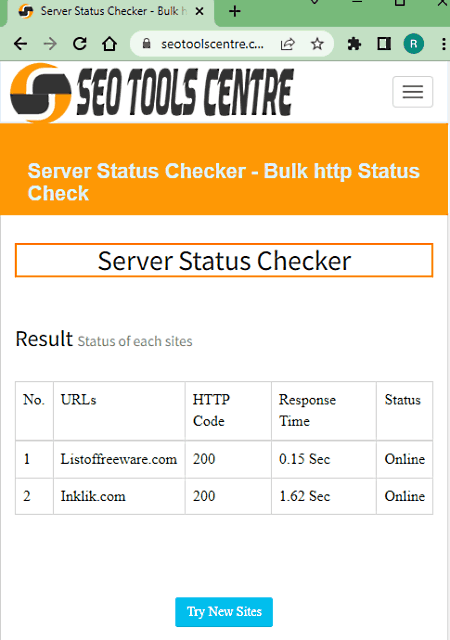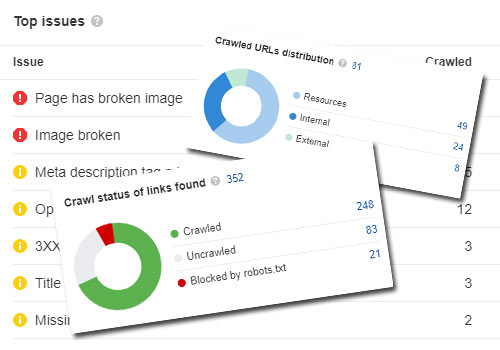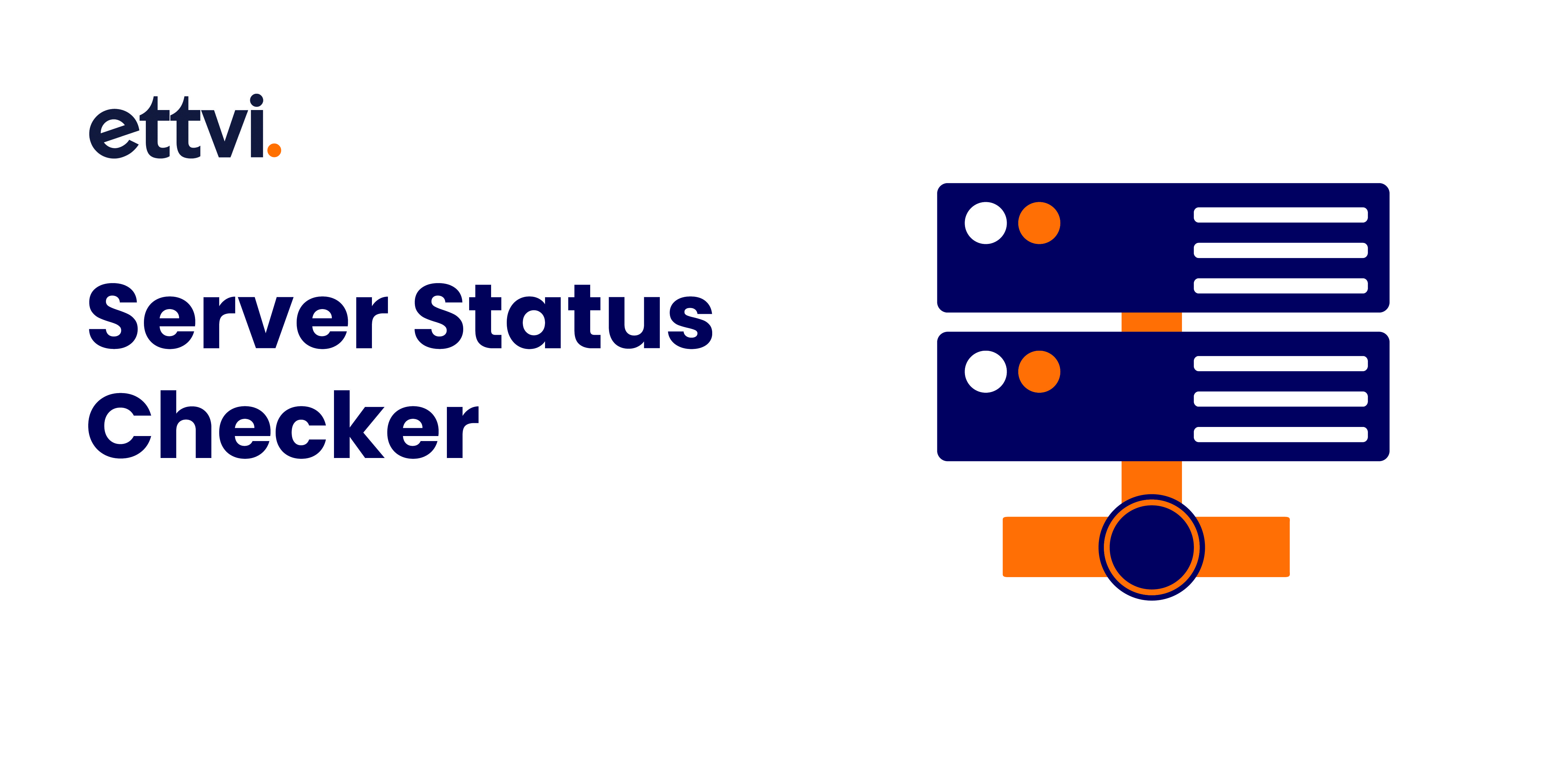Ensuring Your Website Never Goes Dark – Mastering Website Status Checkers for Continuous Uptime
Running a successful online presence demands constant vigilance over your website’s performance. In today’s digital age, even minor outages can result in lost revenue, decreased credibility, and diminished customer trust. This is where a website status checker becomes an essential part of your digital toolkit. It helps you check your website’s status, diagnose problems swiftly, and ensure seamless user experiences around the clock.
A website status checker is a powerful tool that allows you to check website status efficiently, providing real-time insights into your site’s availability. Whether you’re curious about is my website down or want to ensure website uptime, leveraging such tools can save you from unexpected downtimes. Today, I’ll guide you through the importance of website uptime and status monitoring, the best tools available, and how to proactively manage your website’s health to prevent costly downtimes.
The Importance of Website Uptime and Status Checking
In today’s fast-paced digital economy, website uptime — the time a site remains operational — is not just a technical metric; it’s a vital business indicator. Ensuring that your website remains accessible is fundamental for customer satisfaction, brand reputation, and revenue generation. With increasing reliance on online services, consumers expect 24/7 availability; any downtime can turn potential clients away and harm your brand image.
Monitoring your website status regularly is an essential practice to detect issues early. Even the most robust servers or hosting providers may experience unforeseen failures, network issues, or cyberattacks that cause your website to go down unexpectedly. By employing a website uptime checker consistently, you can detect outages early and respond swiftly to minimize the impact on your business.
Additionally, website status monitoring tools help you analyze patterns, track performance over time, and identify persistent issues that require deeper technical intervention. They equip website owners with real-time alerts, preventing prolonged downtime and ensuring that your site’s users always have a positive experience. This proactive approach can significantly boost your business’s trustworthiness and credibility.
What is Website Uptime and Why Does It Matter?
Website uptime is the percentage of time your site is available and accessible to users. It reflects your site’s reliability and is often expressed as a percentage — for instance, 99.9% uptime denotes minimal downtime. High uptime percentages are crucial because even a few minutes of website downtime can have cascading effects on your online presence.
Imagine running an eCommerce platform that experiences intermittent outages during peak shopping hours. Each minute of downtime could translate into thousands of dollars in lost sales, dissatisfied customers, and a tarnished brand reputation. That’s why businesses prioritize maintaining at least 99.9% uptime, which is frequently considered the industry standard for high-reliability sites.
The significance of check website status routinely cannot be overstated. It allows you to confirm whether any technical glitches affect your visitors and if your hosting provider is delivering its promised reliability. Moreover, real-time monitoring empowers you to act immediately when issues arise, reducing downtime periods and safeguarding revenue.
Wondering if your website is down? Get instant status updates now!” ⚡ 🔍
Common Reasons for Website Downtime
Understanding the common causes behind website downtime enables proactive management. Many issues are preventable if recognized early or mitigated through strategic planning.
- Server issues are a leading cause, including hardware failures, overloaded servers, or misconfigurations. These problems can be hardware-related or caused by software errors and often demand technical intervention.
- Network problems may involve DNS errors, network congestion, or routing issues, preventing users from reaching your site. These are often outside your direct control but can be diagnosed with the right tools.
- Cyberattacks like Distributed Denial of Service (DDoS) attacks intentionally overload your server with traffic, rendering it inaccessible. With increased cyber threats, investing in security and monitoring becomes essential.
- Maintenance or updates sometimes necessitate temporary shutdowns. However, poorly managed updates can lead to longer-than-expected downtimes if not executed carefully.
- Hosting provider faults can also cause outages due to maintenance or unforeseen failures. Choosing reputable hosting and using monitoring tools helps in quickly detecting and responding to such issues.
The Impact of Downtime on Businesses and Users
Downtime doesn’t just frustrate visitors; it can have tangible consequences on your business. Every moment your website is inaccessible can translate into lost sales, diminished customer trust, and damage to your online reputation.
For eCommerce businesses, downtime equates directly to revenue loss. For instance, imagine a blackout during a flash sale or holiday promotion — missed opportunities can’t always be recovered. Competitive businesses with high website uptime often outperform competitors during such crises because customers trust their stability.
Beyond immediate sales, prolonged downtime can hurt your search engine rankings. Search engines prioritize websites that demonstrate consistent reliability. An unreliable website suggests poor management, which can lower your visibility in search results, reducing organic traffic over the long term.
Moreover, customer dissatisfaction escalates when users experience frequent outages or slow load times. This dissatisfaction can translate into negative reviews, reduced customer loyalty, and a tarnished reputation that’s difficult to repair. Hence, leveraging a website status checker can be a strategic move toward maintaining optimal website uptime and providing a seamless user experience.
How to Check if Your Website is Down

Knowing how to check if your website is down is a fundamental skill for website owners. Sometimes, issues stem from local problems — your network or device — rather than the website itself. Hence, using a mix of manual and automated methods can give you a comprehensive picture of your site’s status.
Ensuring your check website status accurately involves multiple layers of verification, especially if you’re managing a business-critical site. Let’s explore the various techniques and tools available to diagnose website status effectively.
Manual Checks: Simple Steps to Diagnose Issues
The most fundamental approach to check website status begins with manual, straightforward methods. These are accessible, quick, and can serve as your initial step to confirm whether your website is truly down or experiencing local connectivity issues.
Start by refreshing your browser and attempting to access your website through multiple devices or browsers. Sometimes, a cache issue or browser problem can prevent site loading. Clearing your browser cache or trying private/incognito mode can help distinguish between local issues and server-side problems.
Next, test your website’s accessibility by trying to reach it from different networks — for instance, switching from Wi-Fi to cellular data, or using different internet service providers. If your site loads on some networks but not others, the problem might be related to DNS, routing, or regional censorship.
Another simple method involves pinging your website using command-line tools like Command Prompt or Terminal. Running a command such as ping yourdomain.com can show whether your server responds to requests. Additionally, tracert or traceroute commands can trace the network path, identifying where the connection fails.
While manual checks are useful, they do not provide continuous monitoring or instant alerts. For that, integrating a website status monitoring tool can automate vigilance and notify you immediately if the site goes down unexpectedly.
Utilizing Online Tools for Quick Status Checks
For more comprehensive and efficient check website status, online tools serve as invaluable resources. These free website status checkers can determine if your website is accessible globally, diagnose slow response times, and identify specific errors.
Popular services like “Down For Everyone Or Just Me,” “Pingdom,” or “GTmetrix” allow you to check if your website is down from multiple geographic locations, providing a broader perspective. They often include detailed reports on load times, server response codes, and other performance metrics.
These tools are particularly advantageous because they eliminate guesswork. If multiple checks confirm your site’s server isn’t responding, it’s time to investigate further — perhaps by contacting your hosting provider or running more in-depth diagnostics with website uptime checkers.
Some tools also offer real-time alerts and performance insights, empowering you to act proactively before users encounter issues. Setting up automatic checks ensures you are constantly informed about your website status without manual intervention.
Cross-Referencing: Checking Across Different Devices and Networks
Reliability in monitoring your website’s status increases when multiple checks are corroborated across devices and networks. If only your device or local network faces an issue, your check website status might falsely indicate downtime.
Therefore, it’s critical to cross-reference by testing your website on various devices, browsers, and network connections. For example, if you suspect the site is down, visit it from a smartphone’s data connection, home Wi-Fi, and a work network to see if the problem persists across all.
Employing VPN services can also help determine whether regional restrictions or regional network issues influence accessibility. Additionally, website uptime checkers with geo-distributed servers provide an objective, global health check.
This multi-source approach offers clarity. It helps you determine whether the issue is localized (e.g., your ISP or device) or universal (e.g., your server or hosting). Understanding this distinction ensures that your next steps — whether troubleshooting internally or contacting hosting support — are well-informed.
Website Uptime Checkers: Tools to Monitor Your Site

Manual checks are helpful but not sustainable for ongoing, reliable website management. This is where website uptime checkers excel. These tools automate the process, giving continuous monitoring, real-time alerts, and detailed analytics to prevent unexpected outages.
Choosing the right website status checker depends heavily on your specific needs — whether you run a small blog or manage a large enterprise website. This section explores important features, compares popular options, and explains how to leverage these tools effectively.
Features to Look for in a Website Status Checker
When selecting a website status monitoring tool, several features should be non-negotiable:
- Real-time monitoring and alerts: Immediate notifications via email, SMS, or app when your website goes down or experiences performance issues.
- Global testing locations: Ability to test from multiple geographic locations to detect regional problems.
- Detailed reporting: Historical data and analytics helping you identify patterns or recurring issues.
- SSL and security checks: Ensuring secure connections alongside uptime monitoring.
- Integration options: Compatibility with other tools like website analytics or incident management systems.
- User-friendly dashboard: Clear, actionable insights without complex configurations.
- Affordable pricing: Free plans with essential features or scalable subscriptions for larger sites.
By prioritizing these features, you ensure your monitoring setup is both comprehensive and accessible. Remember, proactive check website status results in fewer surprises and smoother site operations.
Comparison of Popular Free Website Status Checkers
Several free website status checkers are available, offering various features suitable for different user needs:
- Down For Everyone Or Just Me: Simplistic but effective, quickly reveals if your site is accessible worldwide.
- Pingdom: Offers free basic checks with detailed performance reports; great for performance insights.
- Uptime Robot: Provides 50 check intervals per monitor and instant alerts; very popular for ongoing monitoring.
- GTmetrix: Combines load time analysis with uptime monitoring; ideal for performance optimization.
Each tool has its strengths and limitations, but for most small to medium businesses, a combination of Uptime Robot for continuous checking and Down For Everyone Or Just Me for quick diagnoses offers a powerful, cost-effective solution.
How to Set Up Alerts for Downtime Notifications
Setting up alerts is essential to respond promptly to website issues. Most website uptime checkers allow you to configure notifications via email or other channels.
Start by choosing your preferred contact method — email or SMS — ensuring notifications reach you reliably. Next, select your monitoring frequency; more frequent checks (every few minutes) increase responsiveness but may incur costs depending on your service plan.
Customizing alert thresholds can prevent false alarms. For example, if your site experiences slight delays but remains available, you can set thresholds to notify you only when downtime lasts longer than a specified duration.
Finally, automate the escalation process. Integrate your monitoring tools with incident management platforms or communication channels like Slack to mobilize your team quickly. This way, your check website status routine becomes an active part of your website management strategy, minimizing downtime impact.
Website Status Monitoring Tools: A Comprehensive Overview

Beyond simple uptime checks, website status monitoring tools offer advanced functionalities that provide in-depth insights and continuous oversight. These comprehensive solutions are invaluable for large businesses or websites with complex infrastructures where downtime can have severe consequences.
Overview of Advanced Monitoring Tools
Managed monitoring systems often include features such as real-time performance analytics, server health checks, and security assessments. Tools like New Relic or Pingdom are popular choices, providing full-stack monitoring — from server response times to front-end performance.
These platforms typically offer customizable dashboards, enabling you to track key metrics specific to your website’s functionality. They also tend to support integrations with other enterprise tools like Slack, PagerDuty, or custom dashboards, for streamlined incident response.
Implementing advanced tools helps detect bottlenecks and performance degradation before they lead to downtime, ensuring a proactive approach. They also assist in capacity planning, ensuring your infrastructure scales rightly as your traffic grows.
Benefits of Continuous Monitoring for Websites
Continuous monitoring brings several significant benefits:
- Early detection of issues minimizes duration and impact of outages.
- User experience improves as your site remains fast, available, and reliable.
- Data-driven decision-making enables optimizing infrastructure based on actual usage patterns.
- Compliance and SLA adherence are easier to maintain with detailed uptime records.
Such tools transform website management from reactive troubleshooting to proactive maintenance, reducing stress and preventing business disruption.
Integration with Other Tools and Services
Effective website management often involves multiple tools working harmoniously. Many website status monitoring tools offer API access, enabling integration with content management systems, hosting providers, or analytics platforms.
For example, integrating with website security solutions like Wordfence or Cloudflare adds layers of security, alongside performance monitoring. Similarly, syncing uptime data with project management tools ensures your team stays informed and prepared for any downtime incidents.
These integrations foster a holistic view of your website’s health, combining performance, security, and availability metrics. Having a unified platform to view all relevant data streamlines decision-making and allows for rapid incident response.
Best Practices for Proactive Website Management
Preventing website downtime requires diligent, regular upkeep and strategic planning. Adopting best practices ensures not just reactive fixes but proactive prevention of issues that can disrupt user experience and harm business.
Regular Maintenance and Updates
Consistent maintenance includes updating your CMS, plugins, server software, and content. Software vulnerabilities often lead to security breaches or crashes, so staying current minimizes these risks.
Create a maintenance schedule where check website status regularly, test backup systems, and verify plugin compatibility. This routine helps detect potential issues early, preventing them from escalating into server crashes or performance degradation.
Additionally, monitor the health of your hosting environment, including disk space, CPU usage, and bandwidth. An website uptime checker integrated into your maintenance schedule can alert you to anomalies before they affect users.
Importance of Backup Solutions
Backups are the safety net for any website. Regular backups enable quick restoration if your site is compromised, corrupted, or affected by hardware failure. Critical data, such as customer information and content, can be lost without proper backup procedures.
Implement automated backup protocols, storing copies securely both onsite and offsite. Test restoring backups periodically to ensure they work as intended. This proactive approach minimizes downtime in emergencies, preserving your website stability.
Creating a Response Plan for Website Downtime
Preparation is key when your site experiences issues. Develop a comprehensive incident response plan that outlines steps to take during outages. Include roles and responsibilities for your team, communication channels, and escalation procedures.
Leverage monitoring tools to notify your team instantly. Craft clear, professional messaging templates for informing customers and stakeholders about ongoing issues and estimated resolution times. Transparent communication fosters trust even during outages.
Conduct regular drills to test your response plan, ensuring your team responds swiftly and efficiently. Having a well-practiced plan reduces confusion, speeds up recovery, and demonstrates your commitment to quality service.
Conclusion
In an increasingly digital world, maintaining high website uptime and proactively monitoring your site’s status is paramount. Utilizing website uptime checkers and website status monitoring tools ensures you detect outages early, respond swiftly, and minimize negative impacts on your business. Regular maintenance, diligent backups, and a structured response plan contribute to a resilient online presence capable of weathering technical or security challenges. By integrating these best practices and leveraging advanced tools, you can ensure your website remains an accessible, trustworthy gateway to your brand, delivering a seamless experience for your visitors every time they click.
Whether you’re a small blogger or a large enterprise, understanding and managing your website status with modern digital tools is the key to sustained success. Start today by exploring reliable website status checker solutions, and turn uptime management from a chore into a strategic advantage.





